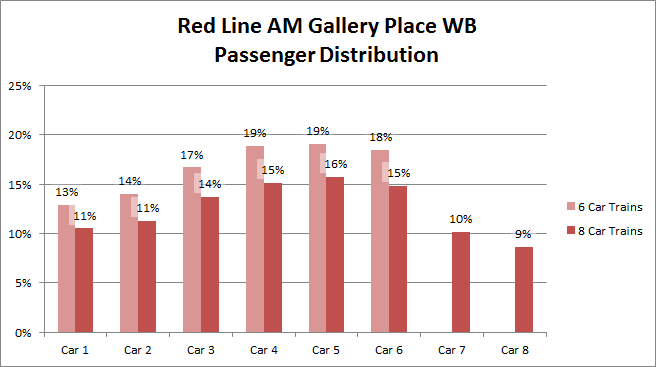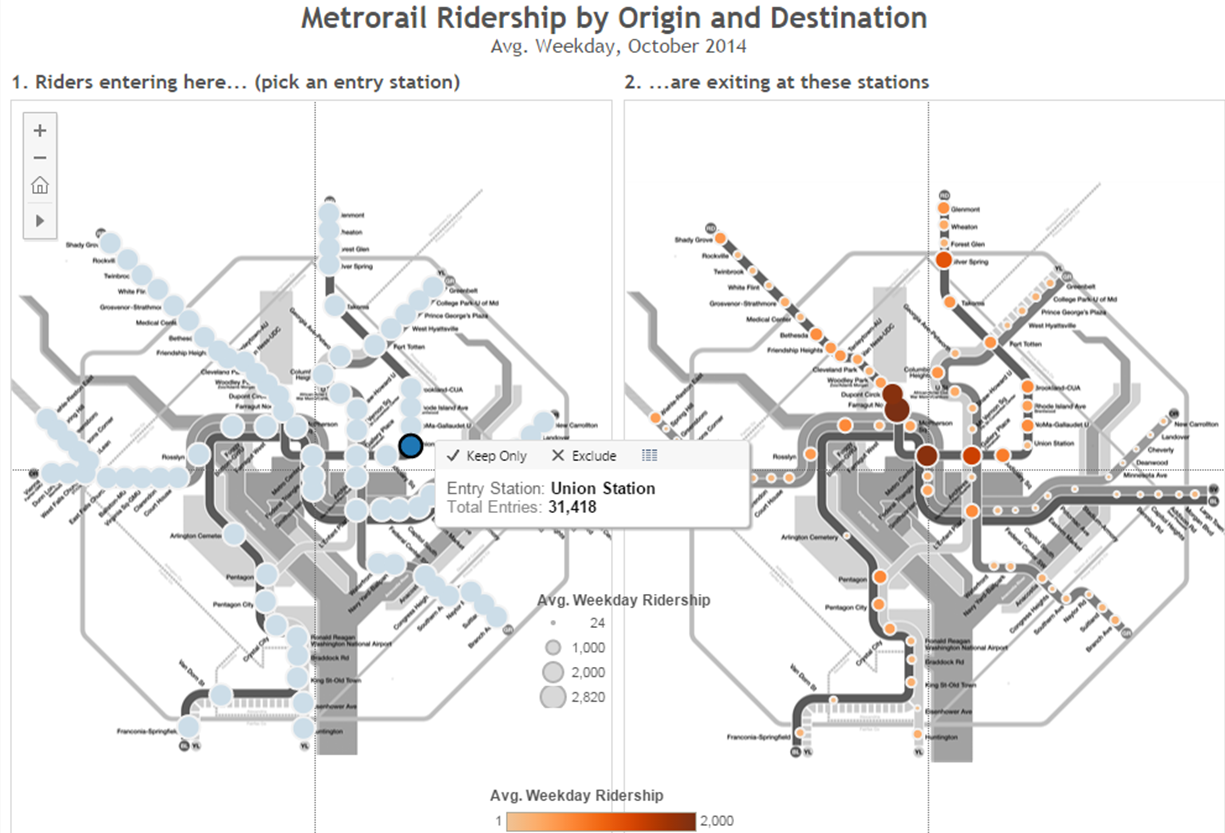Planning Tool Update Sheds Light on Rail Car Crowding Distribution
Latest version of Line Load tool will feature modeled car-crowding numbers.
Many factors influence which car number of a Metrorail train a customer rides. Infrequent riders may wait for the train near the escalator and board the nearest rail car. Savvier customers may prefer to ensure they are the first to exit at their destination station or have an shorter walk at a transfer station. Others may board cars based on understanding where seats are more likely to be available. All of this activity can result in uneven loading of Metrorail cars across a given train, with some rail cars crowded and others near empty.
As we mentioned in 2013, the Office of Planning has an in-house tool that allows planners to estimate how crowded trains are based on origin-destination ridership data. Currently we are in the midst of a few updates, which will include the Silver Line that opened last year. Another of the new features that we are excited about is a rail car crowding analysis for the system’s most critical segments. Based on over six months of rail car-crowding data that was collected at selected stations by rail passenger “checkers,” the train-based ridership data will be distributed across the cars so we can estimate what kind of crowding we have by car number, at the peak load points. The following graph illustrates the observed car crowding variations at Gallery Place.
Customers may experience crowded conditions even when the average rail passenger per car (PPC) numbers (PDF) would indicate otherwise. This new feature is an important addition that will help Metro planners better understand the customer experience. The car crowding analysis will begin to identify which cars of a train tend to be crowded in the peak hours, and which are less crowded. This information will the be used as a starting point for devising strategies for better spreading customers across all cars of a train.
How do you choose which rail car you ride in? Other than berthing trains at the center of the platform (see this informative article over at Greater Greater Washington on that topic), what strategies might Metro consider to better balance customers across rail cars?





Recent Comments